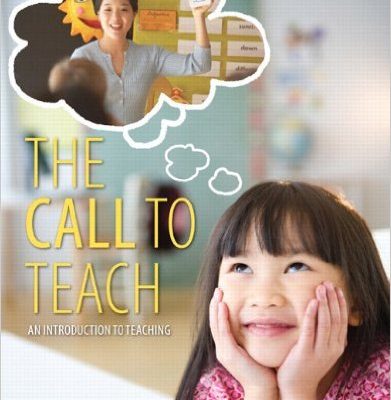20 Yummy Food Books for Kids

Of course, everyone needs to eat. Children’s authors know that food-related details engross children’s literature. Here are our top picks for children’s food books, whether you want to encourage preschoolers to pretend to cook, foster an appreciation for various eating customs, or pique the interest of future MasterChef Junior contestants.
In this early childhood classic, a large and active family counts their way through grocery shopping and meal preparation. Encourage kids to discuss their family’s culinary customs or to create their counting books on food.
Grandmas often receive praise for being the family baker, but Pop Pop is the main character in this tale. A grandson and grandfather pair’s joyful time together is described using lively verbs and onomatopoeia, creating a lemon cake as sweet as this tale.
The unusual nature of this tale enchants young readers. Candy is the one food Little Pea detests the most. Share it to start a discussion on your preferred and least like foods. It’s a great option for practicing acting out or storytelling as well.
After reading this book, we want to buy fresh produce and break out the watercolors. Fruits and vegetables are fascinating because of Lois Ehlert’s use of color, diversity, form, texture, and, of course, those initial letters!
After reading this story, children have started creating pancakes in countless classrooms. Rewind to a period when making the traditional morning treat required more than just grabbing a box of mix. Children should read this book.
A little girl helps her mom cook a old-fashioned Korean dish for a family meal. Students won’t be able to help but contribute because this is one of the most engaging novels we’ve ever read.
Early childhood classrooms frequently use the Little Red Hen stories, particularly this variation. An urban hen wants to bake a pizza, but she cannot get her friends to assist her in gathering ingredients or shopping around the area. Will she share if the pizza is more than she anticipated?
A small youngster gathers vegetables, makes dough, and prepares sauce for handmade pizza in the tradition of Soup Day (another beloved culinary holiday). We adore the straightforward language while still containing many excellent details and vocabulary. This makes it ideal for educating children about food history and inspiring them to engage in real or pretend cooking.
This is one that 80s-era teachers would undoubtedly recall from their childhood. Mama Bear steps in with a family plan for better health when Sister, Brother, and Papa Bear’s nibbling on Sugar Balls, Choco-Chums, and Sweetie-Cola gets out of hand.
The ideas of being open to eating new meals and embracing diversity still ring true, even though kids today undoubtedly eat foods from other cuisines more frequently than kids did when this book was created. We adore the final scene, depicting Yoko and Timothy’s makeshift café and their blossoming bond.
What’s not to love about food trucks for kids? Finger-licking good cuisine delivered from a mobile kitchen that can be enjoyed outside. This comic title highlights various culinary offerings as it rhymes its way through a day of a food fair. Invite students to discuss their food truck experiences or develop their business ideas.
Students often gasp at the first sentence, “There weren’t any stores or refrigerators long ago.” Numerous up-close images, tidbits of information, and quotations from those who farm, fish, or raise animals for food now are placed before historical photos.
Charlie sets a new standard for parents and other caretakers with his deft handling of his younger sister Lola’s fussy eating. Nothing is alluring than mashed potatoes that are cloud fluff from Mount Fuji and fish sticks that are direct from the Mermaid Supermarket.
The patience Mrs. Peters has shown with her seven kids is commendable. Her finicky eaters also honor her with a lovingly baked birthday cake (plus pink lemonade, bread dough, and more). We have utilized this book to practice comprehension techniques, examine the author’s message, and generate “creative” recipe ideas.
When Cora’s mother agrees to let her assist prepare pancit, a Filipino noodle dish, she seizes the opportunity since she is determined to become a “real cook.” When her entire family enjoys her delectable creations, she feels the satisfaction of cooking for others. Encourage kids to discuss the kitchen positions they would be most proud to hold.
Widely renowned for his inventive cuisine is chef George Crum. A new culinary trend is started when George’s crunchy, salty answer to a “punctilious” customer returning his plate of potatoes three times: the potato chip! With older students, go over the author’s note to practice identifying exact details from made-up ones in this “fictional tale with a helping of truth.”
Sofia wants to assist when she discovers nothing is in her friend’s refrigerator. With the help of this touching tale, educate children about food insecurity.
Matilda, an adventurous eater, decides to broaden her parents’ narrow palates in a cute role reversal. She picks up cooking skills from other cuisines and manages to get her family to accept everything, including pho, fajitas, and even “green things.”
Jack uses all of his family’s resources to bake the princess a cake after receiving an invitation to her birthday party. When birds, bears, and other impediments obstruct his path to the castle, Jack, who is incredibly bright, finds a solution.
This book will likely be read a lot in your class, just like its predecessors Lady Pancake & Sir French Toast and The Case of the Stinky Stench. It boasts a sneaky asparagus stalk, breakfast items with mustaches, and a riotous rhyming scheme. (Plus, it would be a fantastic tie-in for science classes where you examine melting and freezing.)






